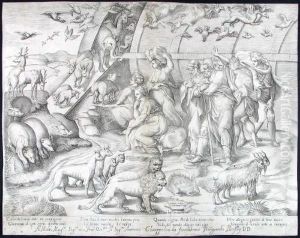Giovanni Battista Cavalieri Paintings
Giovanni Battista Cavalieri, also known as Giovanni Battista de' Cavalieri, was an Italian engraver and printmaker, born in 1525 in an undetermined location in Italy. While not as widely known as some of his contemporaries, Cavalieri played a significant role in the development of printmaking during the Renaissance period.
His life and career were mainly centered in Rome, where he moved at a young age. There, he was influenced by the flourishing art scene and the works of prominent artists such as Michelangelo, Raphael, and others. Cavalieri was particularly known for his skill in engraving, a technique that involves incising a design onto a hard, usually flat surface, by cutting grooves into it.
Cavalieri's work was characterized by its meticulous detail and the influence of the classical art that was being rediscovered and revered in Italy at the time. He produced a wide range of prints, including religious subjects, mythological scenes, and portraits. These works were highly regarded for their precision and the clarity of his line work, which showcased his mastery of the medium.
One of his significant contributions to art was his book, 'Antiquarum statuarum urbis Romae liber primus', published in 1585. This book was one of the first systematic studies of the ancient sculptures in Rome. It provided detailed engravings of the statues, making the works of classical antiquity accessible to a broader audience who could not travel to Rome. This publication was instrumental in spreading the ideals of the Renaissance throughout Europe.
Cavalieri's engravings were not just reproductions of other artworks; they were also interpretations and a form of dissemination of the classical style. His works helped to educate artists and laypeople alike, spreading the visual vocabulary of antiquity and the Renaissance far beyond the reach of the original sculptures and paintings.
Giovanni Battista Cavalieri died in 1601, leaving behind a legacy that would influence the future generations of engravers and printmakers. His work remains an important testament to the craftsmanship and artistic spirit of the Renaissance period.
